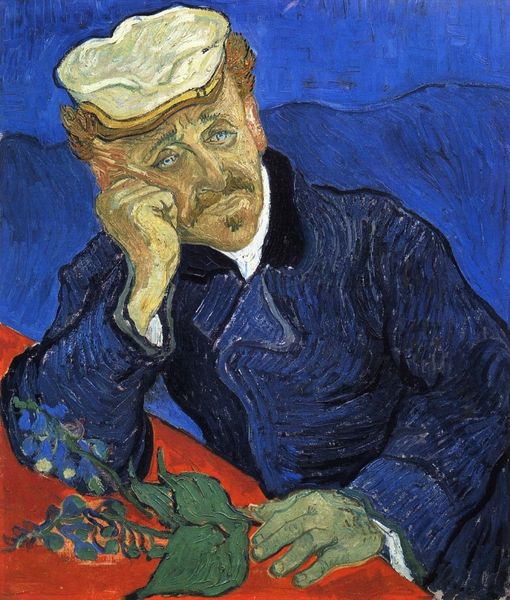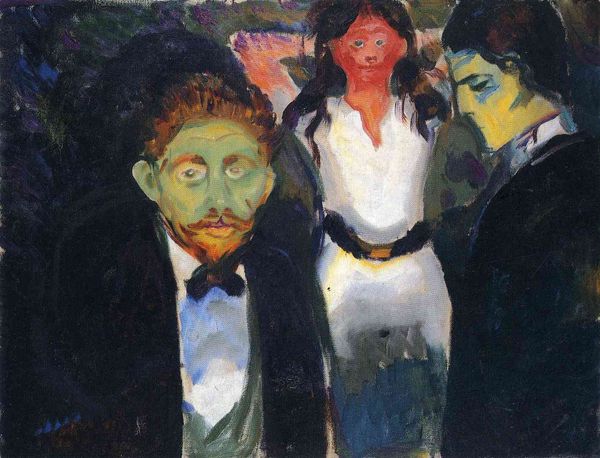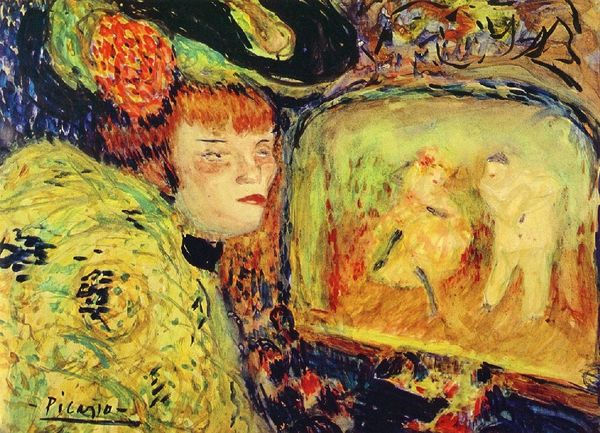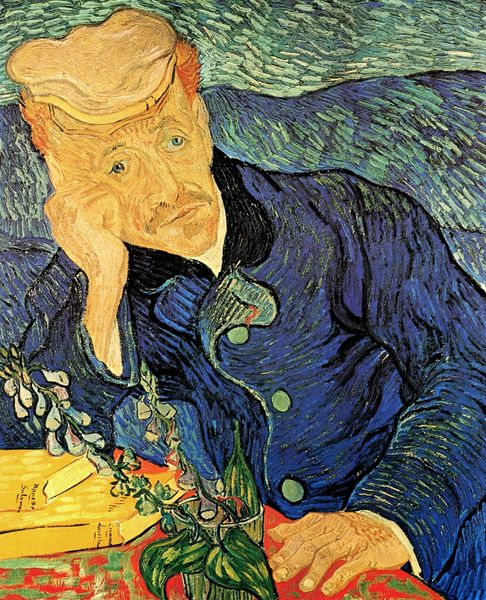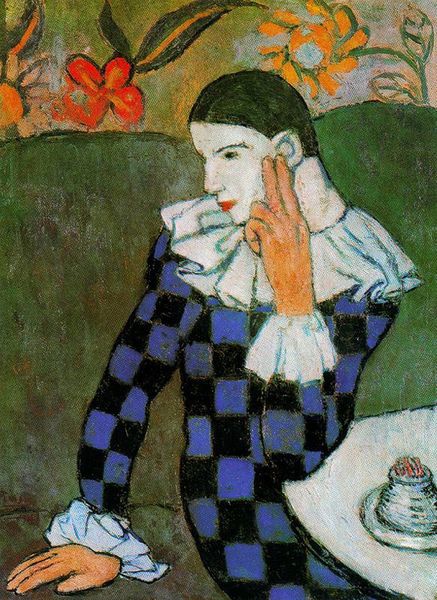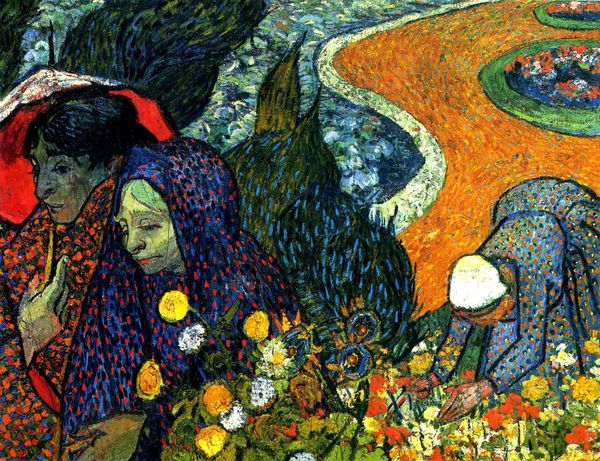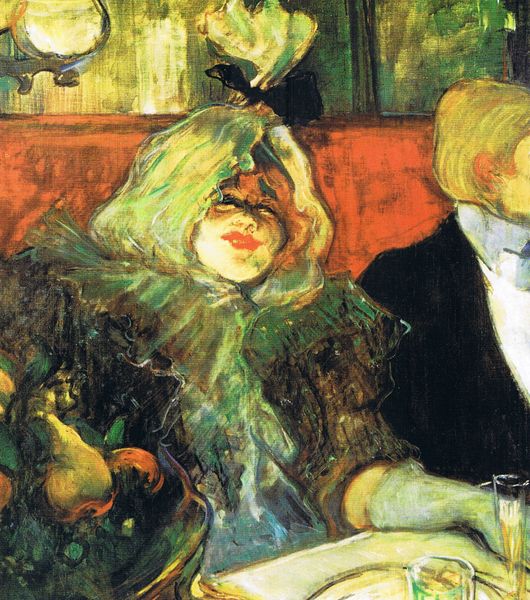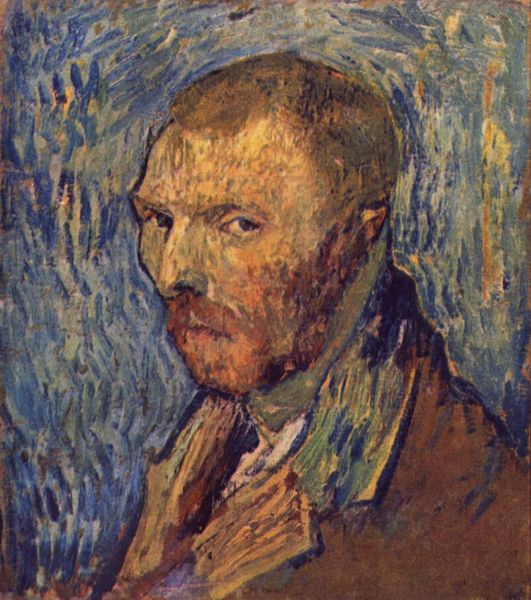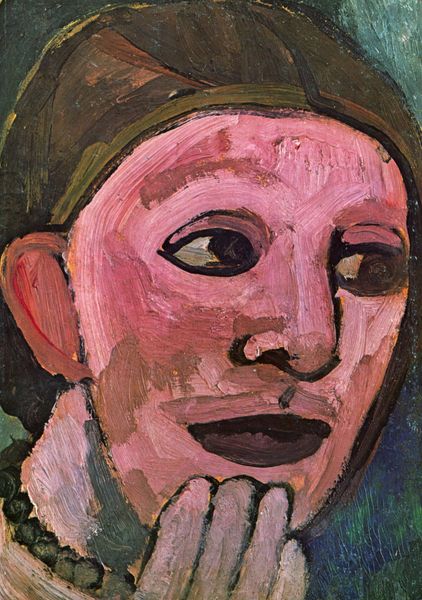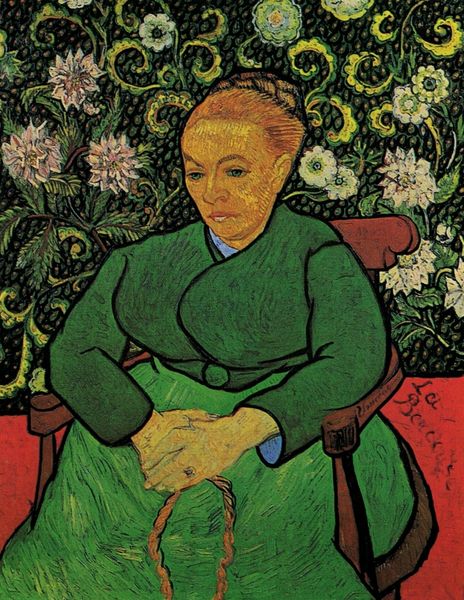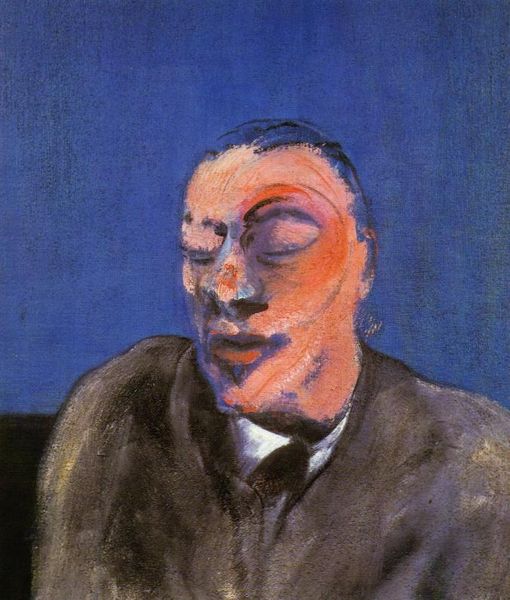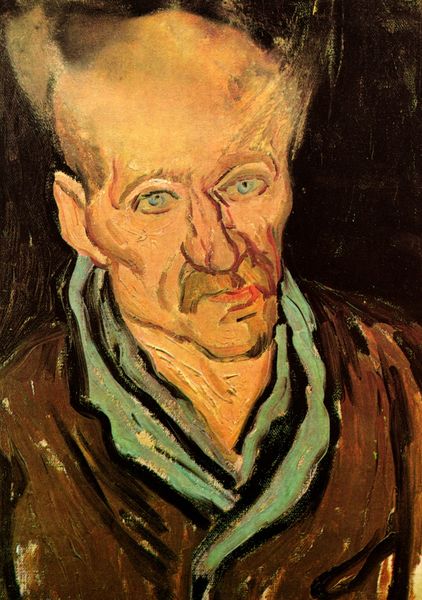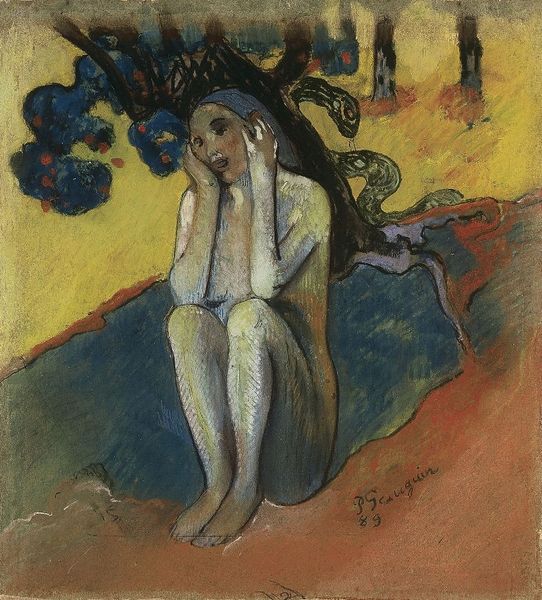
painting, oil-paint
#
portrait
#
narrative-art
#
symbol
#
painting
#
oil-paint
#
oil painting
#
neo expressionist
#
expressionism
#
symbolism
#
post-impressionism
#
portrait art
#
modernism
#
fine art portrait
#
expressionist
Dimensions: 22 x 28.5 cm
Copyright: Public domain
Curator: This is Paul Gauguin's "Nirvana, Portrait of Jacob Meyer de Haan," painted in 1890. Gauguin's portraits are rarely simple likenesses, and this one's no exception. It's currently held at the Wadsworth Atheneum in Hartford, Connecticut. Editor: Wow, it’s… intense. The colors are so unsettling. That yellowish, sickly pallor against the lurid backdrop... I feel like I've just walked into a nightmare. It's definitely not the nirvana I imagined. Curator: Well, it's vital to unpack the complicated relationship between Gauguin and de Haan. Meyer de Haan was a wealthy artist who not only supported Gauguin financially but also housed him and provided him with space to work. There's a power dynamic at play, also considering Meyer de Haan was Jewish, and how anti-semitic sentiments manifested in that period is an important context here. Editor: That's putting it mildly. Look at the almost demonic depiction. Those piercing, yellowish eyes...It is unsettling! And is that a spectral figure looming behind him? Is that supposed to represent…temptation? Or his inner turmoil maybe? Curator: Quite possibly both. Remember Gauguin was experimenting with symbolism, exploring the artist's internal landscape. This painting isn't just about depicting Meyer de Haan; it's about conveying his spiritual state, perhaps through Gauguin’s lens, with all its inherent biases and judgements. It is said he considered de Haan "his mentor". We must remember how problematic it is to depict religious or ethnic belonging onto your painting. Editor: So it's like Gauguin is painting de Haan's portrait but also painting his own perception, anxieties, or perhaps even his own demons onto the canvas? It is almost violent. Curator: Precisely. And remember that post-Impressionism moves away from literal representation, embracing subjective expression and symbolic meaning. We also cannot separate Gauguin's paintings to its colonialism past and relationship with French society. Editor: Makes you wonder about the complex nature of artistic patronage, right? About the complicated relationships of being, you are at once admirer and benefactor? Gives me a whole different level of art itself. The entire work is not that appealing given its complicated social context. Curator: Absolutely. And considering Meyer de Haan's identity, it compels us to reconsider the historical frameworks around modernism, art, patronage and other marginalized intersectional positions during its time. Editor: It gives so much depth to every reflection that the image, at first, hid. Thank you!
